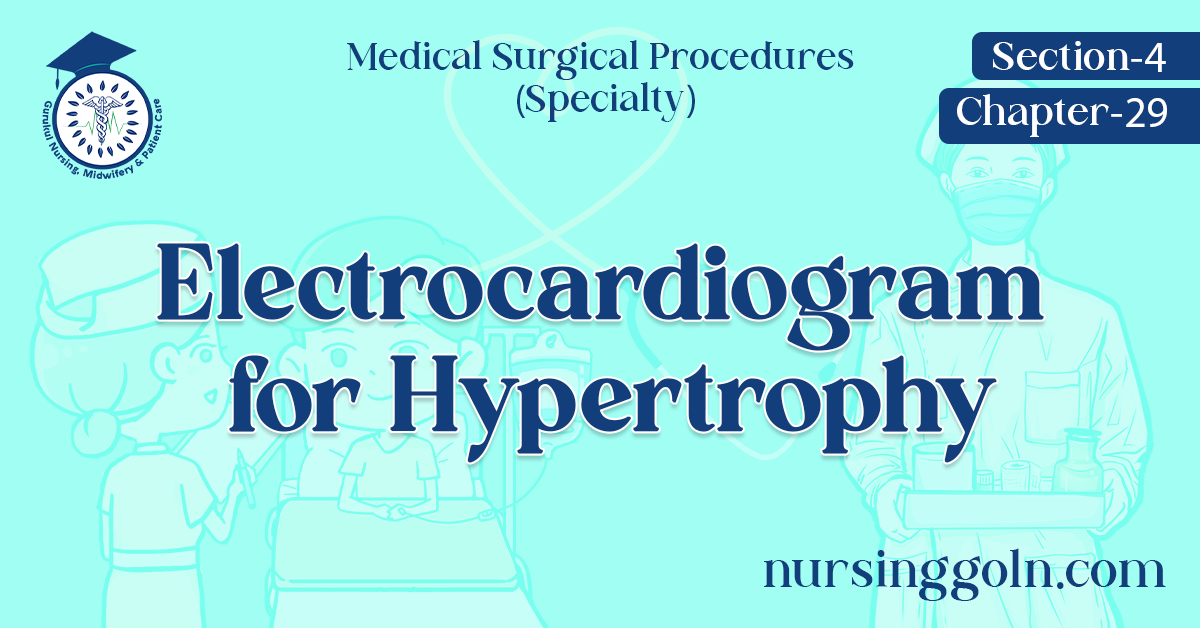Today our topic of discussion is Electrocardiogram for Hypertrophy.
Electrocardiogram for Hypertrophy

Hypertrophy
- Hypertrophy is defined as enlargement of the tissue or organ
- Atrial enlargement includes right atrial enlargement (RAE) and left atrial enlargement (LAE). Right atrial enlargement is peaked P-wave, more than 2.5 mm in any lead (best seen in II, III, V3 and V1). Left atrial enlargement is P-wave duration is more than 0.08 seconds, may have plateau or notched counter. Terminal and deep inversion of the P wave in V3 or V1
- Right ventricular hypertrophy shows dominant R in Vi or V2 essential
- Dominant S in I, AVI, V5 or V6 and inverted T and depressed ST in leads with dominant R
- Left ventricular hypertrophy shows large R wave in lead I, AVL, V5 and V6 and more than 30 mm. Inverted T and depressed ST in leads with a large R-wave. Essential criteria for left ventricular hypertrophy is S in VI or V2 + R in V5 or V6=/35 MM.

Electrolyte Disturbance in ECG
- Normal serum potassium (K) value is 3.5 to 5.0 mEq/L. extremely serious problem occurs if potassium level less than 2.5 mEq/L or more than 7.0 mEq/L
- If the potassium level less than 5.0 mEq/L called hyperkalemia causes wide flat p wave, prolonged PR interval, decreased R-wave, widen QRS complex and peaked narrow T-wave in the ECG
- Serum potassium level less than 3.5 mEq/L is called hyperkalemia causes prolonged P wave, depressed ST segment and large U-wave is seen in ECG

- Serum calcium level is 8.5-10.5 mg/dl. If the serum calcium level less than 8.5 mg/dl. is called hypocalcemia.
- Calcium level more than 10.5 mg/dl called hypercalcemia, Hypercalcemia shows increased QT interval and hypocalcemia shows decreased Q interval in the ECG.
Read more:
